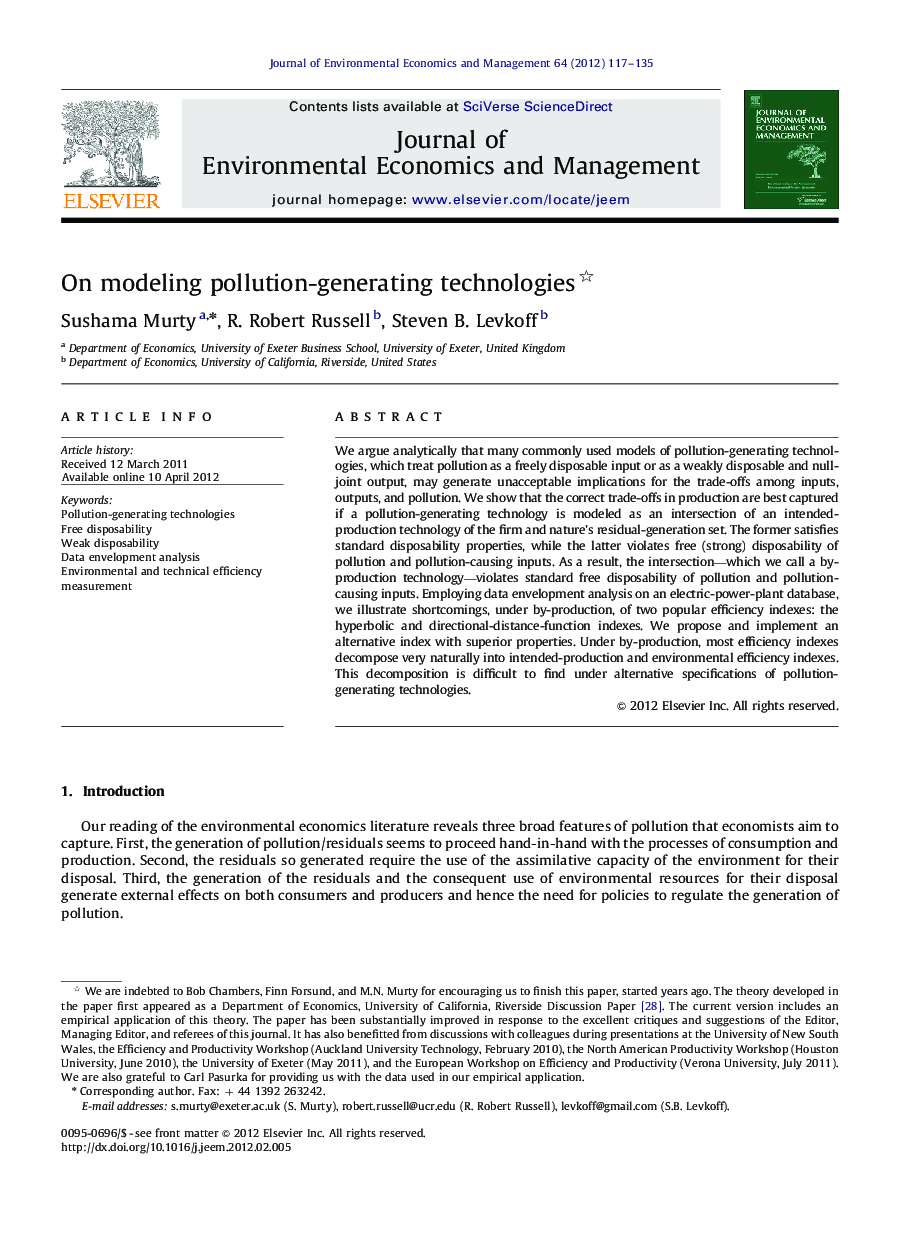| Article ID | Journal | Published Year | Pages | File Type |
|---|---|---|---|---|
| 10475617 | Journal of Environmental Economics and Management | 2012 | 19 Pages |
Abstract
We argue analytically that many commonly used models of pollution-generating technologies, which treat pollution as a freely disposable input or as a weakly disposable and null-joint output, may generate unacceptable implications for the trade-offs among inputs, outputs, and pollution. We show that the correct trade-offs in production are best captured if a pollution-generating technology is modeled as an intersection of an intended-production technology of the firm and nature's residual-generation set. The former satisfies standard disposability properties, while the latter violates free (strong) disposability of pollution and pollution-causing inputs. As a result, the intersection-which we call a by-production technology-violates standard free disposability of pollution and pollution-causing inputs. Employing data envelopment analysis on an electric-power-plant database, we illustrate shortcomings, under by-production, of two popular efficiency indexes: the hyperbolic and directional-distance-function indexes. We propose and implement an alternative index with superior properties. Under by-production, most efficiency indexes decompose very naturally into intended-production and environmental efficiency indexes. This decomposition is difficult to find under alternative specifications of pollution-generating technologies.
Related Topics
Social Sciences and Humanities
Economics, Econometrics and Finance
Economics and Econometrics
Authors
Sushama Murty, R. Robert Russell, Steven B. Levkoff,
